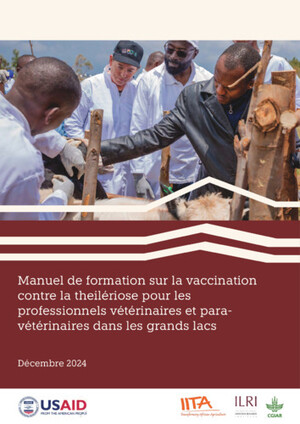
Infectious Diseases of East African Livestock (IDEAL)
This will be a unique study of the impact of infectious diseases on East African cattle. Normally, only one infectious disease is studied at a time; here, we will look at over 80 different infections, allowing us to consider their effects as a whole. The study involves intensive monitoring of a cohort of 500 calves for the first year of life. Any signs of infection will be noted and provisional diagnoses made. Samples of blood and other tissues will be taken, and used to apply state-of-the-art diagnostic techniques for identifying infections. Samples will also be stored in a ‘Biobank’, for future research. The study will generate data on thousands of cases of infection, records of the clinical signs shown by the animals and of any impact on their health and growth, together with information on genetics, immunity and nutritional status. These data will be analysed statistically to rank different infections in order of their importance and to identify factors which predispose some cattle to a high burden of infectious diseases. The data will also be used to develop simple, practical tools to help diagnose infections in the field where most animal health workers do not have access to sophisticated laboratory facilities.
Objectives/Goals
This study will be the first attempt to provide a quantitative analysis of the entire infectious disease burden of any host population in any setting. The specific scientific aims are to:
- provide a comprehensive estimate of the infectious disease burden of East African calves in mixed farming agroecosystems over a 3-year period;
- evaluate performance of diagnostic tools in the field and develop improved diagnostic systems;
- test for direct and indirect interactions between different infections and their sequelae;
- identify specific and non-specific risk factors for calf mortality, poor health and poor growth;
- relate cattle disease status to specified genetic, immunological and nutritional markers;
- create an archive of clinical and epidemiological data and a fully documented Biobank of blood, serum, white blood cells and tissues from infected cattle for use by the research community.
The data collected will allow determination of:
- Whether the negative impacts of different infections are independent of one another, testing the hypothesis that their impacts may be synergistic or (in some instances) antagonistic; and
- Whether ‘positive’ traits (e.g. resistance to infection and/or disease, good condition, immunological status etc.) cluster in certain individuals – the “good-cow/bad-cow” hypothesis.
Expected outputs
- This study will provide unique field data on total infectious disease burden in livestock and its relation to animal health and to both genotypic and phenotypic traits.
- It will also provide a platform for further research on diagnostics, vaccines, therapeutics, immune responses, pathogenesis, disease resistance and disease transmission.
- The results will be important for fundamental scientific knowledge (providing unique data on the interactions between different infections and between infections and host traits), and for tropical animal health, and ultimately for human health and welfare in a region where people are directly and critically dependent on their livestock.

















